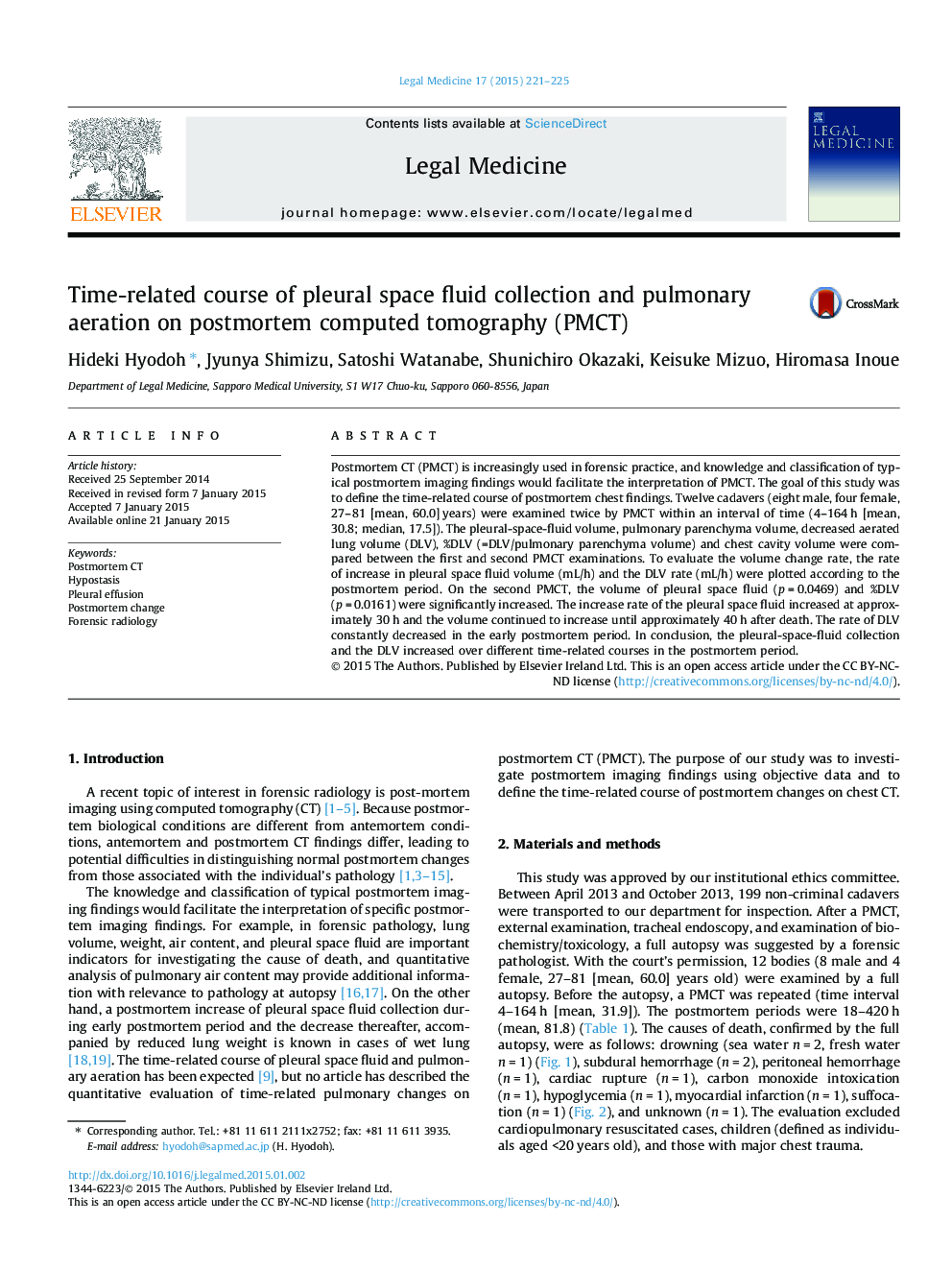| Article ID | Journal | Published Year | Pages | File Type |
|---|---|---|---|---|
| 10254541 | Legal Medicine | 2015 | 5 Pages |
Abstract
Postmortem CT (PMCT) is increasingly used in forensic practice, and knowledge and classification of typical postmortem imaging findings would facilitate the interpretation of PMCT. The goal of this study was to define the time-related course of postmortem chest findings. Twelve cadavers (eight male, four female, 27-81 [mean, 60.0] years) were examined twice by PMCT within an interval of time (4-164 h [mean, 30.8; median, 17.5]). The pleural-space-fluid volume, pulmonary parenchyma volume, decreased aerated lung volume (DLV), %DLV (=DLV/pulmonary parenchyma volume) and chest cavity volume were compared between the first and second PMCT examinations. To evaluate the volume change rate, the rate of increase in pleural space fluid volume (mL/h) and the DLV rate (mL/h) were plotted according to the postmortem period. On the second PMCT, the volume of pleural space fluid (p = 0.0469) and %DLV (p = 0.0161) were significantly increased. The increase rate of the pleural space fluid increased at approximately 30 h and the volume continued to increase until approximately 40 h after death. The rate of DLV constantly decreased in the early postmortem period. In conclusion, the pleural-space-fluid collection and the DLV increased over different time-related courses in the postmortem period.
Related Topics
Physical Sciences and Engineering
Chemistry
Analytical Chemistry
Authors
Hideki Hyodoh, Jyunya Shimizu, Satoshi Watanabe, Shunichiro Okazaki, Keisuke Mizuo, Hiromasa Inoue,
